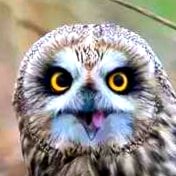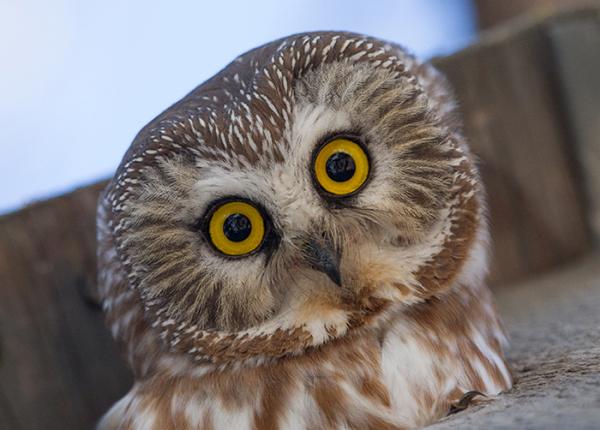Photo by Faruk Kizil
Habichtskauz auch Uralkauz
Das Bild entstand an einer Futterstelle beim Falkner in den Niederlande.
Ural owl (Strix uralensis)
The picture was taken at a feeding place of a falconer in Netherlands.
One of the given translations called this Habich’s Owl, so I tried to find out who Habich was. Took me way too long to figure out Habich was not a person, it means goshawk in German. The German wiki entry had a lot of info the US one didn’t though.
The species is referred to as Slaguggla, or “attacking owl”, in Swedish, Habichtskauz, or “goshawk-owl”, in German or as the “long-tailed owl” in Russian.
Attempts to re-introduce the owl have been partly successful in the German-Austrian-Czech border region (Bavarian Forest , Bohemian Forest , and Šumava), and most recently in the Vienna Woods.
Austria seems to have a difficult time with the project as people keep shooting them. 🙄


That was my guess about Habichtskauz, but to me the standout feature of this particular owl is the face. From skimming the German wiki for it, even though it looks gentle, it seems very territorial and aggressive, so that may also factor into the hawk similarities, but I don’t have either bird where I am to make much comparrison.
Steinkauz makes better sense now, being named after where it is living. Reminds me of the Rock Eagle Owl.
Thank you for all your insights today! I have really learned a lot from all this!
Or the Barn Owl which commonly is found in barns.
I like Barn Owl a little less, along the line of the joke that always comes up of “what did they call them before barns were invented.” Plus Barn Owls are basically everywhere, not just relegated to places there are barns. Veiled Owl works in every occasion, though when I ran the translate feature on the German wiki for the Ural Owl, it seemed to translate the word it had for facial disc, so maybe that is a word that refers to too many owls in German. (Just checked, Gesichtsschleier is the word it was translating to “facial veil”)
Looking at the list again, it’s interesting Barn Owl is an euhle as it has a round head. Many other languages also seem to separate out the barn owl types. That seems to lend support to the “personality traits” explaination of the euhle/kauz differences.
See it the other way around: A barn isn’t a proper barn without accommodating a Barn Owl.
However, in German, some birds are called by their current habitat: Feldlerche (Eurasian Skylark), Feldsperling (Eurasian Tree Sparrow), Haussperling (House Sparrow), Hausrotschwanz (Black Redstart), Gartenrotschwanz (Common Redstart), … Yet, one may ask: Where did they live before there were fields, houses, and gardens?
Linguistic separation of the Barn Owls from the True Owls makes somewhat sense as they are the two separate families of the owls.
In the German Wikipedia article on owls Strigiformes I also found an explanation of the origin of the two terms Eule and Kauz:
Interestingly, the Eulen you are not supposed to carry to Athens (Eulen nach Athen tragen means doing something useless), are originally Steinkäuze (Athene Noctua) that were a symbol of the godess Athene and were depicted on the reverse side of the old Drachme coins from Athens.
Today, this Drachme coin is depicted on the reverse side of the Greek 1 Euro coin:
Thank you for the nice conversation.
Animal sound words can be so funny. I imagine our native ones all make sense to us, as it’s what we learned growing up, but hearing some in other languages seem bewildering. Even after listening to the kauz pronunciationg (surprise T sound in there would have tricked me!) I don’t know how that relates to an owl.
I was familiar with the Little Owl being the Owl of Athena and on the old coin, but I forgot it was on the new one. I like how they keep the ancient design still. That feels like a nice tradition.
You’ve helped me understand a lot of new things. It’s been much fun!